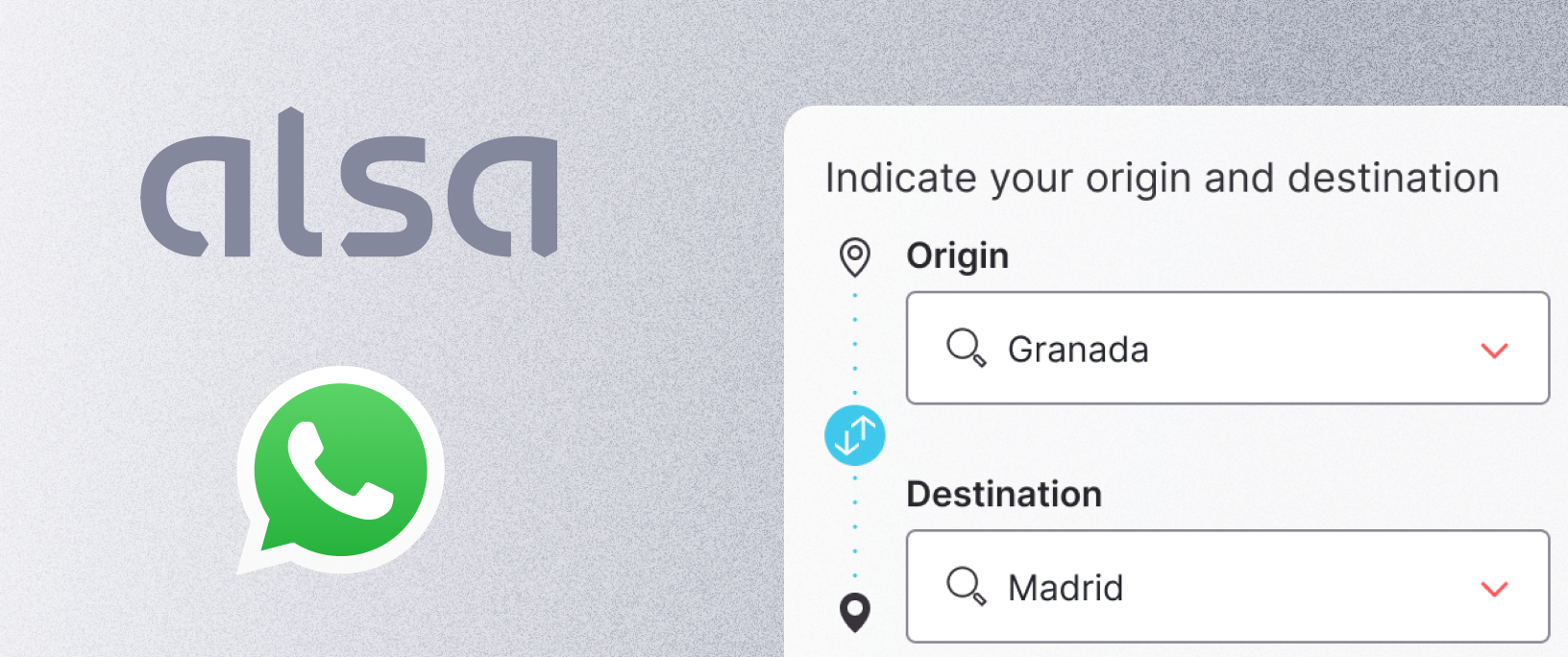
Conversational AI refers to technology (like chatbots, voice assistants, or conversational applications) that simulates a human conversation. Let’s take a look at some use cases, examples, and companies that are succeeding with conversational AI.
What is conversational AI?
Conversational AI is the simulation of an intelligent conversation by machines. It refers to the different technologies that help machines understand, process, and respond to human language.
The concept of “understanding” is an important one. It’s what separates artificial intelligence from basic automation. In other words, it’s the difference between something like a rule-based chatbot and an NLP chatbot. (We will compare these in more detail later).
With conversational AI, the degree to which the computer “understands” the conversation depends on which type of technology it uses.
Types of conversational AI technology
There are two main types of conversational AI technology.
- Natural language processing (NLP)
- Machine learning (ML)

Natural language processing (NLP)
Natural language processing (NLP) is the ability of a computer program to understand human language as it is spoken and written.
Natural language processing works in three main steps. First, the computer reads the language. Then it works to understand it. Finally, it formulates a response.
Step one: Reading inputs
First, conversational AI uses Natural Language Processing (NLP) to break down requests into words and sentences that the computer can read.
Step two: Understanding inputs
Then, Natural Language Understanding (NLU) helps the computer analyse the input text and uses that to determine the meaning behind the user's request. It does this by matching what's said to training data that corresponds to an 'intent'.
Step three: Generating responses
Then, the computer uses Natural Language Generation (NLG) to formulate a response. In this step, the computer uses structured data to create a narrative that answers the user’s intent. It combines the user intent with a structured hierarchy of conversational flows to present the information clearly.
Machine Learning
Machine learning programs make predictions based on patterns learned from experience. It is considered more “intelligent” than NLP. The more data it collects, the more it learns, and the more accurate its predictions become.
Amazon’s Alexa is an example of conversational machine-learning technology. Each time Alexa makes a mistake in interpreting a request, it automatically ‘learns’ how to do better the next time around.

Chatbots vs. Conversational AI
Most of us are familiar with chatbots, so naturally, the question becomes: how is conversational AI different from a chatbot?
Chatbots fall into the category of conversational AI if they use machine learning or NLP. However, not all of them do.
Some chatbots use basic logic to automate responses. These are called rule-based chatbots.
The real difference between chatbots and conversational AI can be seen when we compare rule-based chatbots to conversational AI.
Rule-based chatbots
Rule-based chatbots (or decision-tree bots) use a series of defined rules to guide conversations. They do this in anticipation of what a customer might ask, and how the chatbot should respond.
Rule-based chatbots can use very simple or complicated rules. They can't, however, answer any questions outside the defined rules. These chatbots do not learn through interactions. Also, they only perform and work with the scenarios you train them for.
Conversational AI
As we already know, conversational AI uses natural language processing and/or machine learning to understand the context and intent of a question before formulating a response.
Conversational AI generates its own answers to more complicated questions using natural-language responses. The more you use and train conversational AI, the more it learns, thus making the conversation feel more natural and human-like.
Some other advantages of conversational AI are that it:
- can learn from the information gathered
- can continuously improve as more data comes in
- can understand patterns of behaviour
- has a broader range of decision-making skills
Why does conversational AI matter now?
The way that customers are expecting to communicate with brands is changing. Customers expect to be able to solve their daily issues asynchronously and digitally, and brands need to digitalize if they want to stay competitive in the modern landscape.
They expect businesses to accelerate their digital transformation and be available on multiple communication channels.
- 80% of customers say the experience a company provides is as important as its products and services.
- 85% of customers have stated that they would like to be able to message with brands, according to a recent survey. And 75% would be willing to spend more with brands that offer messaging.
This is a sign that companies are becoming more serious about digital channels. Due to the limitations of traditional contact centre solutions, forward-thinking buyers are adopting new interaction paradigms.

Business messaging is the new normal
Conversational AI is helping businesses adapt in a world where messaging is the new normal. People want to communicate with businesses like they do with friends and family — on messaging apps.
That’s because:
- Messaging is asynchronous. People don’t have to wait on hold for an answer or wait more than 24 hours to get a response via email. Messaging allows them to multi-task and go about their routines at the same time.
- People are already on messaging apps. In a world where there’s an app for everything, people are sick of being forced to download yet another app. They’d much prefer to use the channels they’re already on.
- The UI/UX of messaging apps is getting better every day. Meta, Apple, and Google are all in a race to build the most intuitive messenger app. They know that messaging apps are no longer limited to sending messages; they’ve become multifunctional platforms. Users can now experience a fully rounded buyer journey and do things like: book a trip, open a claim process, and make payments directly through messaging platforms, eliminating the need to switch between different apps or worse, only depend on traditional channels such as email and phone.
Rising expectations are sparking a digital industrial revolution
Consumer behaviour is changing, and customer expectations are rising. Customers now demand self-service support, seamless interactions across channels, and quicker responses. And it’s impossible to meet these expectations without the help of conversational technology.
Conversational AI is playing an important role in helping large businesses scale conversations.
The conversational AI market is booming
Businesses recognize the importance of conversational technology. So it’s no surprise the conversational AI market is booming. The global conversational AI market size is expected to hit around USD 86.42 billion by 2032 from USD 10.08 billion in 2022 and is poised to grow at a CAGR of 23.97% during the forecast period 2023 to 2032.

Which industries are using conversational AI?
Conversational AI in Airlines
For airlines, conversational AI represents a whole new level of opportunity to improve customer experience to new heights. Conversational AI can be used in airlines to book a trip or change a booking, to process payments, and even do ancillary sales.
Below are a few conversational AI use cases for airlines:
- New bookings or booking modifications
- Ancillary sales: baggage handling or seat selection
- Check flight status
- Track lost baggage

Conversational AI in Banking
To maintain a competitive edge, traditional banks must learn from fintechs, which owe their success to providing a simplified and intuitive customer experience. Conversational AI can be used in banking to facilitate transactions, help with account services, and more.
Below are a few conversational AI use cases for banking:
- Help customers check their bank balances
- Send billing reminders and notifications
- Help find a nearby ATM
- Assist with mobile deposits
- Help customers apply for loans
Conversational AI in Insurance
Like in banking, the insurance industry is also in the middle of a digitally-driven shake-up. Conversational AI represents a new means of distributing products and resolving claims. These shifts have ushered in an era of new products built on data and analytics.
Below are a few conversational AI use cases for insurance:
- Manage claims and renewals
- Gather customer feedback and reviews
- Customer awareness and education

Conversational AI in Healthcare
Healthcare is an industry that is ripe for conversational AI. Conversational AI has the potential to make life easier for patients, doctors, nurses, and other hospital staff in several ways.
Below are a few conversational AI use cases for the healthcare industry:
- Check symptoms
- Answer common health questions
- Book appointments
- Check up on patients
- Send medication reminders
- Escalate emergency cases
Conversational AI in E-commerce
Conversational AI is making a significant impact on the ecommerce industry. It helps brands form customer relationships that last, hold conversations that have context, and ultimately sell more products.
Below are a few conversational AI use cases for ecommerce:
- cross-sell and upsell products
- find specific products
- make suggestions about the right sizing
- place orders
- help with returns
- answer FAQs
Companies using conversational AI
Conversational AI solutions

The conversational technology you’ll need will depend on your industry and potential use cases. You’ll need a conversational strategy that can grow with you as the demands of customers change and the needs of your different business units evolve. At Hubtype, we work with our clients to recommend the right level of automation for their business goals and objectives.
Our conversational technology goes beyond simple carousels and buttons, they use media-rich components like floating elements, web views, and more. Using these graphical elements enriches the experience for the user while improving the capacity for automation.
Our conversational technology also integrates with your tech stack, aggregates messaging channels, and delivers critical insights to help you continuously improve.










.jpg)

